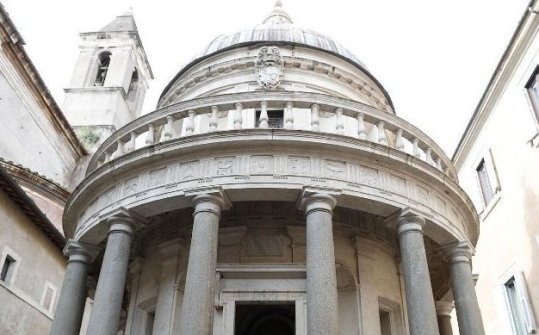The Footprint of Rome reveals the meaning and relevance of the institution's contributions to Spanish and European culture. The selection of pieces presented here, just one of the many possible selections, adds examples of the various creative and investigative facets present in the residents' work, and is accompanied by documentary material mostly from the Academy's own archive. , to which sets from private collections are joined. From all this results a new story, alternative to the traditional one, both of the history of the Academy and, by extension, of modern and contemporary art in Spain. In it, times, generations and techniques are mixed, and key themes are combined such as the vindication of the magnetism of Rome, a city in which all eras coexist; the fascination with traveling to distant lands, but also the inner journey; the evolution of the territory of art and thought; the stimulus and challenge of coexistence in a place full of possibilities and, above all, the transformative capacity of interesting creative minds that the Academy has had and has, making us sense a fascinating future path.
The curatorial structure of the exhibition, which aims to trace a synthetic reading of a century and a half of history, is made up of five major concepts: Lighthouse, Community, Rome, Journey and Workshop, which, with a current perspective, reflects from the present and are based on an exhaustive analysis of the history of an institution that is projected into the future.
This project celebrates the 150 years of history of the institution since, on August 8, 1873, the government of the First Spanish Republic published in the Madrid Gazette the decree of creation and the first regulations of the Spanish School of Fine Arts in Rome, which shortly after would be renamed the Spanish Academy of Fine Arts in Rome. From its beginnings, the objective was to support artistic training by giving official support to the historic presence of Spanish creators in Rome, a city whose cultural impact remains in full force even when Paris, Berlin, Vienna, London or New York emerge as other possible references. Since then, prominent artists and intellectuals have passed through the Academy, whether as directors, pensioners or scholarship holders, structuring a community in which works have been produced that today form part of the country's artistic legacy. In this sense, the set of works loaned for this exhibition demonstrates the vast dissemination of the heritage created in Rome in the main cultural institutions of the territory as well as in numerous private collections.
Given the special historical and current relationship between Valencian art and Italy, the Museum of Fine Arts of Valencia, a crucial institution in the panorama of national culture, with increasing visibility and a clear European vocation, has been configured as the headquarters ideal to host this exhibition. This is also corroborated by the quality of its spaces, its collections and its ambitious exhibition program.




